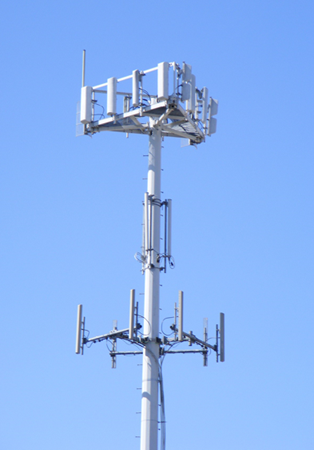M&M Are Looking to Update Their eDiscovery Rules: eDiscovery Trends
And, by “M&M”, I mean Missouri and Michigan. ;o) Here is some important information regarding the impending eDiscovery rules changes in these two states.
On Thompson Coburn’s site (What you need to know about Missouri’s updated discovery rules, written by Rachel Harris), the author notes that Missouri Governor Mike Parson signed into law Senate Bill 224, which limit the scope of discovery and address electronically stored information (ESI) for the first time. Welcome to the party, Missouri!
The amended rules went into effect on August 28th. Under Missouri Supreme Court Rule 41.06, the changes likely apply not only to actions filed after August 28th but also to civil actions pending as of August 28th, unless a court finds that applying the revised rules to a pending action “would not be feasible or would work injustice.”
Senate Bill 224’s changes attempt to bring Missouri’s discovery rules closer to the Federal Rules of Civil Procedure (FRCP) in several ways, such as:
- Scope of discovery and proportionality: Missouri’s amended Rule 56.01(b)(1) will now limit the scope of discovery to information that is not only relevant but “proportional to the needs of the case.” This language mirrors the language of FRCP 26.
- Electronically stored information: Rules 56.01(b)(3) and 58.01 now expressly permit discovery of ESI and permit a party to request that ESI be produced in native format. However, a responding party is not required to produce ESI that is not reasonably accessible because of undue burden or cost. A court may nonetheless order the ESI produced if the requesting party shows good cause.
- Protection of privileged or work product material: Rule 56.01(b)(9) provides a procedure for clawing back information produced in discovery that is subject to a claim of attorney-client privilege or work-product protection. If the producing party gives notice, the receiving party must promptly return, sequester, or destroy the specified information. An attorney receiving what he or she reasonably believes to be privileged or protected information must stop reading the document, promptly notify the involved attorney, return the document, and delete it. Production of privileged or work-product protected information, whether inadvertent or otherwise, will not be a waiver of the privilege.
Additional impacts are discussed within the article.
In Legaltech News® (Michigan Is Getting Prepared for Its Biggest Discovery Rules Changes in 30+ Years, written by Zach Warren), the author notes that the latest state to update their rules to reflect the 2015 Federal rules changes is Michigan, which recently made the largest change to its civil discovery rules in 35 years(!) in a bid to increase “everyone’s access to our courts to resolve their civil legal dispute in a cost-effective manner,” the state bar said. The new rules go into effect Jan. 1.
Within the new rules, there is an increased importance on planning. For example, judges will be placing a greater emphasis on discovery earlier in the case with required initial disclosures within Rule 2.302(A)(1). This may sound like it’s ported from FRCP Rule 26, and to some extent it is—but it also borrows from the recently amended Rule 26.1(a) of the Arizona Rules of Civil Procedure.
So, where can you go to learn more about and understand the changes? At michbar.org/civildiscovery, the Michigan bar has set up a website going through the changes, as well as a calendar of events to help explain the changes throughout the state. This website also includes a link to a guidebook that runs through not only the changes, but also the relevant laws federally and in other jurisdictions that they are drawn from.
Michigan’s judiciary will take a central role in this education; it’s instructive that the guidebook begins with a forward from Chief Justice Bridget M. McCormack. B. Jay Yelton III, a partner at Warner Norcross + Judd, explained that judges were supportive of the committee and its changes for a rather simple reason: They want trials.
“People aren’t filing lawsuits because they can’t afford this system, and I think it strikes all of us that that’s a shame, that the system’s not working as well as it should,” he explained. “People are avoiding the system because of the use of outdated discovery rules that end up burdening the whole process to the point that you never get to a trial, you never resolve the issues.”
It was this sort of buy-in that made the rules process not only successful, but easier to understand, Yelton added. The committee brought in lawyers, judges and other stakeholders in early in the process, and the result was a rules package that elicited very few comments against and very few objections at live hearing.
So, what do you think? What do you think of the changes? Will more states follow suit? Please share any comments you might have or if you’d like to know more about a particular topic.

Image Copyright © Mars, Incorporated and its Affiliates.
Sponsor: This blog is sponsored by CloudNine, which is a data and legal discovery technology company with proven expertise in simplifying and automating the discovery of data for audits, investigations, and litigation. Used by legal and business customers worldwide including more than 50 of the top 250 Am Law firms and many of the world’s leading corporations, CloudNine’s eDiscovery automation software and services help customers gain insight and intelligence on electronic data.
Disclaimer: The views represented herein are exclusively the views of the author, and do not necessarily represent the views held by CloudNine. eDiscovery Daily is made available by CloudNine solely for educational purposes to provide general information about general eDiscovery principles and not to provide specific legal advice applicable to any particular circumstance. eDiscovery Daily should not be used as a substitute for competent legal advice from a lawyer you have retained and who has agreed to represent you.









